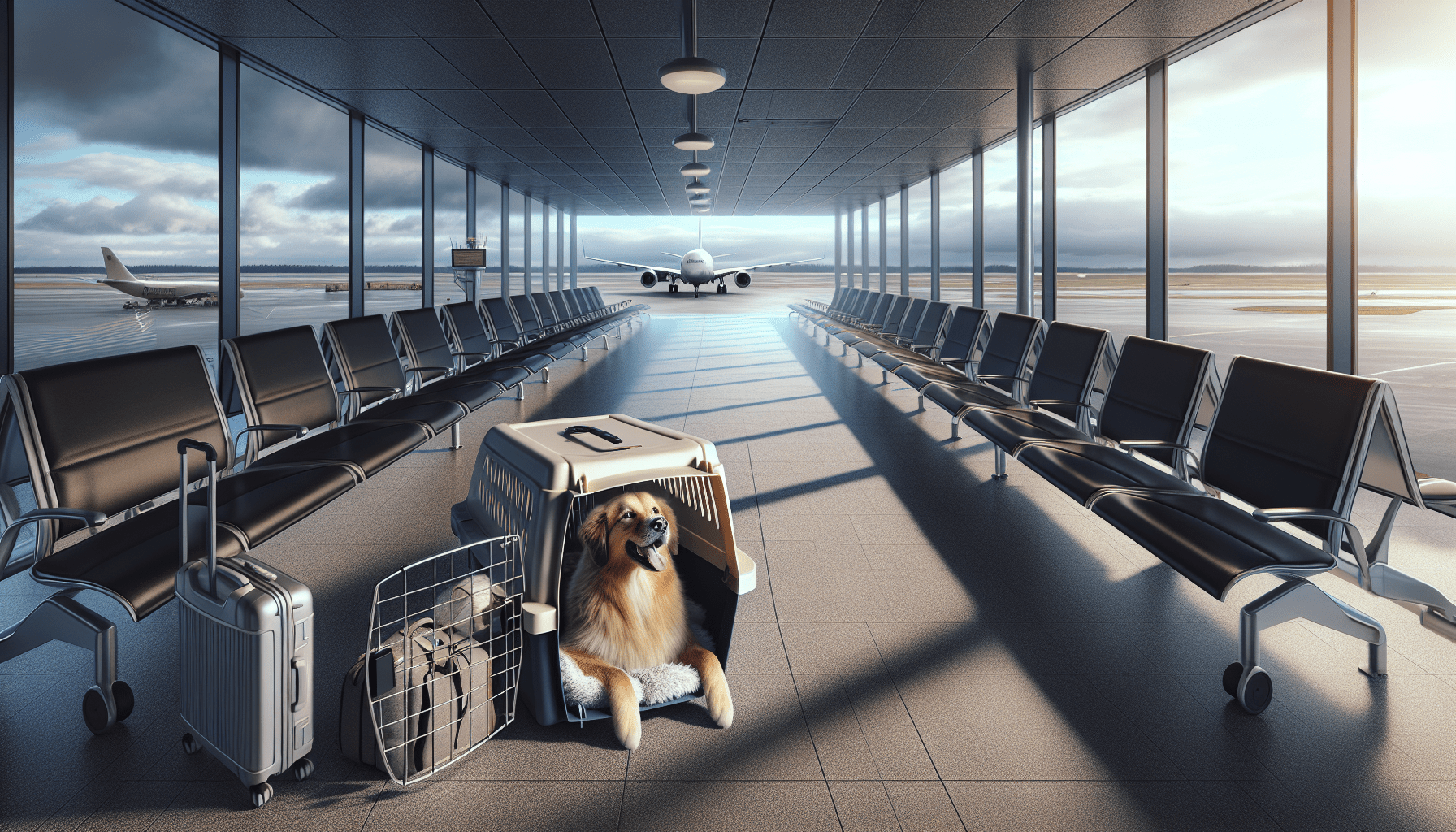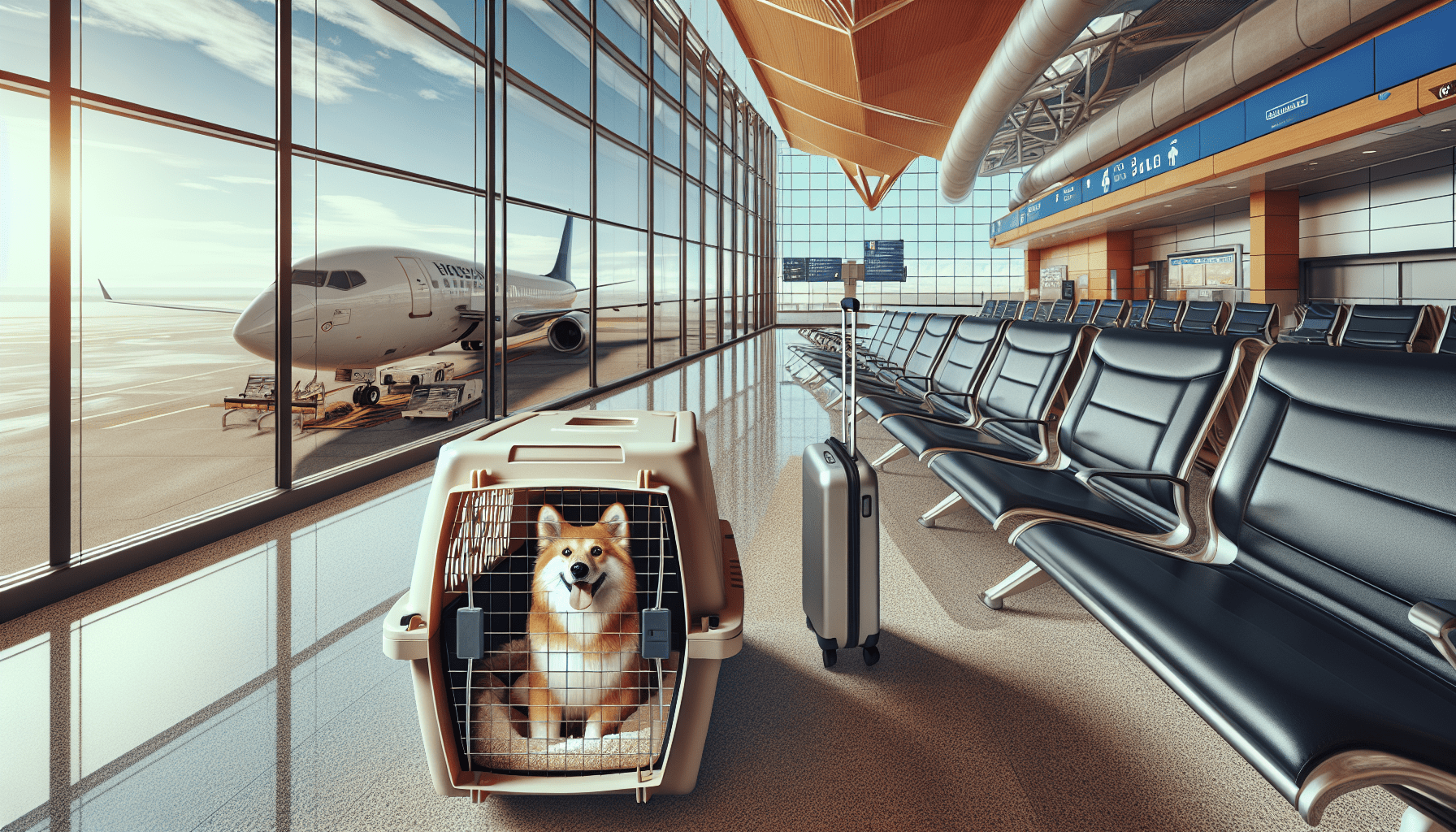Amazon Basics Medium Packing Cubes for Travel, Packing Organizers, 4-Piece-Set With Double Zipper Pulls and Mesh Top Panel, 100% Durable Polyester, Gray, 13.8"L x 9.8"W x 3"H
$17.91 (as of April 20, 2025 04:48 GMT +00:00 - More info)Flying with a dog is a complex decision with numerous considerations that can make or break your travel plans. Depending on your dog’s breed, size, and the airline’s specific rules, your furry friend may need to fly in the cabin, snuggled in a carrier, or placed in the cargo hold, which can be less comfortable and riskier. Some airlines have restrictions on brachycephalic breeds and larger dogs, often relegating them to the cargo hold or outright banning them from flights. You should also reserve your pet’s spot as soon as you book your flight, given that airlines often limit the number of animals allowed per flight. While private jets offer a pet-friendly alternative, they are more costly and environmentally taxing. Remember, flying can be stressful for dogs—noise, pressure changes, and separation are significant stressors—so driving or leaving your pet with a trusted sitter or in a boarding facility might be better options. Consult your vet well in advance to go over travel plans, dietary needs, and potential sedation, and always opt for non-stop flights to minimize the stress on your loyal companion. Researching airline-specific regulations and speaking with customer service can also help you navigate the sometimes murky waters of pet travel policies. Have you ever thought about flying with your dog but felt overwhelmed by the numerous considerations? This is quite common as you’re not only thinking about your own convenience but also the comfort and safety of your furry friend. Flying with a dog is indeed a complex decision with numerous factors that can’t be taken lightly. Let’s walk through everything you need to know to make the best decision for both you and your dog.

Search vacation packages & trips
The Basics: Cabins and Cargo Holds
To start, dogs can fly in either the cabin or the cargo hold of an airplane, but it depends on the airline’s policies, your dog’s breed, and their size. Understanding these basic options is crucial and sets the stage for all your planning.
Dogs in the Cabin
If your dog is small enough, most airlines will allow them to travel in the cabin with you. However, they have to stay in a carrier that fits under the seat in front of you. It’s cozy but can be comforting to have your buddy close by. Beyond just airline policies, consider whether the tight space in the carrier will be too restrictive for your dog.
Dogs in the Cargo Hold
For larger dogs, flying in the cargo hold is usually the only option. It’s essential to understand that while many dogs travel this way without issues, it can be stressful and even dangerous. The cargo area is louder, darker, and has more variable temperatures than the cabin, which may be unsettling for your dog.
Airline Guidelines and Restrictions
Airlines have very specific guidelines about which dog breeds can fly and where they can be located during the flight. These rules are in place to ensure safety and comfort both for human passengers and pets.
Breed Restrictions
Certain breeds, particularly brachycephalic breeds like Bulldogs, Pugs, and Persian Cats, often face restrictions due to their shortened nasal passages, making them more susceptible to breathing problems at high altitudes. You’ll need to check with your airline to see if they have a list of restricted breeds, as these can vary widely.
Size and Weight Limits
Most airlines have strict rules about the size and weight of dogs that can fly in the cabin. Typically, dogs must be under a certain weight limit, usually around 20 pounds including the carrier. Larger dogs will need to fly as cargo.
Table of Airline Pet Policies (Sample Data)
| Airline | In-cabin Pet Weight Limit | Cargo Hold Available | Restricted Breeds |
|---|---|---|---|
| Airline A | 20 lbs | Yes | Bulldogs, Pugs |
| Airline B | 15 lbs | Yes | Shih Tzus |
| Airline C | 22 lbs | No | None |
| Airline D | 18 lbs | Yes | Pekingese |
Top domestic vacation destinations
Making Reservations
When it comes to booking, it’s crucial to make reservations for your pet simultaneously with your flight booking. Many airlines limit the number of pets on each flight, so planning ahead is essential.
Limited Slots for Pets
Airlines usually have a cap on how many pets can travel on a single flight. If you don’t book early, you risk losing a spot for your pet, which can throw a wrench into your travel plans.
Additional Costs
Consider that flying with your pet often incurs additional costs. These fees vary by airline, and you’ll need to factor this into your travel budget.
Private Jet Options
For those considering luxury travel, private jet options are available for pets. However, these are significantly more expensive and come with a larger carbon footprint.
Cost Consideration
Flying privately with a pet can easily cost you thousands of dollars. It’s luxurious but not a feasible option for most people.
Environmental Impact
Private jets have a larger carbon footprint compared to commercial flights, which is an important factor to consider if you’re environmentally conscious.

Stress Factors for Your Dog
Flying can be inherently stressful for dogs. The noise, pressure changes, and the separation from you can create a lot of anxiety.
Anxiety and Discomfort
Just as humans can find flying stressful, so can dogs. They may experience anxiety due to the unfamiliar environment, loud noises, and pressure changes during the flight. Familiarizing them with their travel carrier and even doing trial runs can help alleviate some of this stress.
Health Concerns
Consulting a veterinarian well in advance is a smart move to discuss any potential health risks and if necessary, the use of mild sedatives to ease anxiety.
Alternate Travel Options
Consider alternate travel options like driving if they’re feasible. This can often be a less stressful and more flexible option.
Road Trips
Driving can be a more comfortable option for your dog, allowing them to adjust gradually to the trip and making it easier for you to cater to their needs like bathroom breaks and feeding schedules.
Other Transportation Options
When possible, consider trains or boats, but ensure they are pet-friendly. These options often provide more space and less restrictive environments compared to airplanes.
Pet-Friendly Accommodations and Activities
When you reach your destination, ensuring that your accommodations and activities are pet-friendly is critical for the success of your trip.
Pet-Friendly Hotels
Check if the hotels or Airbnbs you’re considering allow pets. Some establishments even offer pet amenities such as dog beds, bowls, and special treats.
Activities
Plan activities that involve your furry friend. Try to find parks, hiking trails, and pet-friendly restaurants in the area.
Leaving Your Dog at Home
For many scenarios, it may be best to leave your dog at home with a sitter, family, or in a boarding facility.
Sitters and Family
Leaving your pet with someone they know and trust can be the least stressful option for them.
Boarding Facilities
Boarding facilities are another option, but it’s essential to choose one that is reputable and ensures proper care for your dog.
Consulting Your Veterinarian
A veterinarian can provide invaluable advice well in advance of your travel plans, ensuring your dog’s health and comfort.
Health Checks
Your vet can conduct a thorough health check to see if your dog is fit to travel. They can also provide vaccinations, deworming, and any necessary health certificates for travel.
Medication and Sedation
Discuss the possibility of medication or light sedation to make the journey easier for your dog, especially if they are particularly anxious or have health concerns.
Booking Non-Stop Flights
Non-stop flights are ideal as they minimize the duration of travel and stress for your dog. Try to avoid layovers that can extend the journey and increase the complexity of travel logistics.
Minimizing Travel Time
Non-stop flights may often be more expensive, but they are worth it to minimize the overall stress and time your dog spends under less-than-ideal conditions.
Avoiding Peak Travel Times
Flying during off-peak times can make for a calmer experience. Airports are less crowded, and flights tend to run more smoothly without the peak travel rush.
Regulations and Documentation
Always research airline-specific rules and regulations, as they can vary significantly. Make sure you have all the required documentation ready before your flight.
Airline-Specific Rules
Regulations concerning pet travel are not universal. One airline may have different requirements compared to another, so you’ll need to review each airline’s pet policy carefully.
Required Documentation
Ensure you have all necessary documents like health certificates, vaccination records, and identification tags. Some airlines require documents issued within a specific timeframe before travel, so keep those timelines in mind.
Conclusion
Flying with a dog is a complex decision filled with numerous considerations. Whether it’s understanding airline policies, managing stress and health issues, or exploring alternate travel options, every step requires thoughtful planning. Remember, the ultimate goal is to ensure a safe, comfortable, and enjoyable journey for both you and your dog. Happy travels!






